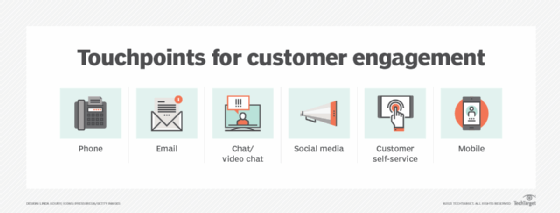The importance of being proactive in customer service
Proactive customer service can help businesses keep customers more engaged, yet tools to support the strategy might cost more than CX leaders are willing to spend.
A major role of AI in CX has rapidly emerged: better proactive outreach.
In fact, 69% of companies expect customer service to shift from mostly inbound to mostly proactive outreach by 2027, according to Metrigy's "Customer Experience Optimization 2024-25" global study of 544 companies. AI can identify at-risk customers who stay with the company after a proactive phone call or email to address issues. It can also identify candidates for a new product or service, enable proactive SMS or email outreach, and analyze responses so that organizations know where to adjust.
At this year's Enterprise Connect conference in Orlando, Fla., a panel of experts shared advice and best practices for proactive outreach. Panelists included Luiz Domingos, Mitel's CTO and head of large enterprise R&D; Davor Golac, Amazon Connect's general manager; Mike Harakal, Five9's head of revenue execution solutions; and Lori Anne Pollock, Verizon Business's senior director of product management for global VoIP and cloud CX/UC.
Challenges of proactive customer service
Organizations might struggle more with a proactive outreach strategy than they anticipate. Some common questions include the following:
- How often should customer service reps reach out to customers?
- Which channels should they use?
- What regulations come into play?
- How can AI, analytics and other tools help a proactive strategy?
A CX leader in the panel's audience asked how the experts justify products for proactive outreach. They require additional spending, which could increase the cost per call -- a metric that many teams have aimed to decrease for years. The audience member wanted to know how and why CX teams should invest in this technology, and how they can measure its success.
Harakal said successful proactive outreach is a two-way street. He said the vendor should always ask about the customer's expectations on day one and at every annual review to ensure that it upholds its promise and the customer uses the product properly.
If a company doesn't use the technology properly, its outreach strategy likely won't succeed. At the same time, vendors and their partners might oversell products. When those tools don't deliver the promised outcome, they want to sell add-ons to reach that goal -- at an additional cost for the enterprise. CX leaders must determine what they want before buying.
"Know what you're trying to accomplish, then experiment to see what works," Pollock said.
With proper planning, CX teams can benefit from proactive outreach, as long as vendors offer financial incentives to experiment with the tool. These incentives include free trials to prove the business case or refunds if the tool doesn't work as intended.
During the sales cycle, the team at Mitel asks how much the customer is willing to spend to achieve an outcome and goes from there, according to Domingos. For Amazon Connect, ROI is heavily reliant on AI analysis, according to Golac. Businesses can gather data and build on it, which AI supports and aims to help them shift their strategy to meet customers on the right channels.

How to get started with proactive outreach
All the panelists advised CX leaders to evaluate regulations, privacy and compliance policies as part of their proactive customer service strategies. They must also make sure that their tools can support each campaign and the differences in regulations based on location.
Businesses should temper compliance and privacy regulations with their ability to deliver what customers need in a trustworthy way. For example, they can build trust if they send the company's name while calling, as most customers aren't likely to answer calls from a random phone number.
Delivering value to both businesses and their customers was a key theme of the panel.
"What happens if you don't make interactions valuable over the right channel at the right time? Fragmented experiences," Golac said.
If CX teams can gain a fuller or more complete view of their audience, they might learn that customers respond more frequently or with a higher-value interaction over specific channels, like social media or email.
To develop a proactive strategy, teams need to get started, and then plan to incrementally improve over time. This includes choosing a tool that can maintain compliance and ensure that any calls from the business are verified and have number reputation protection.
"Do whatever you can to not look like spam," Pollock said.
Robin Gareiss is CEO and principal analyst at Metrigy, which conducts research and advises enterprises and technology providers. She leads coverage into AI, customer experience and contact center operations.







